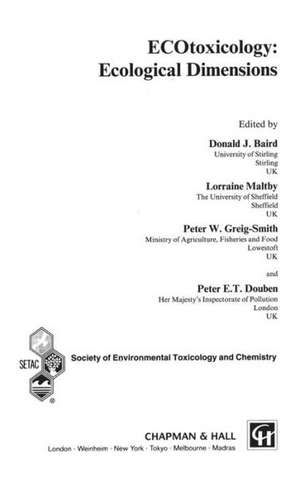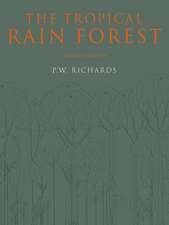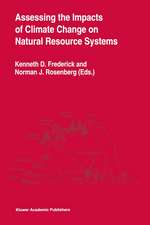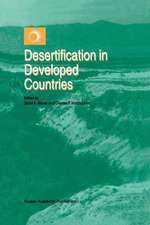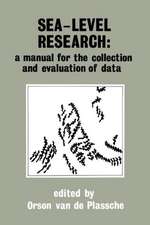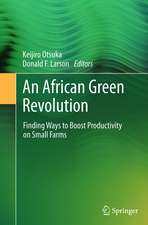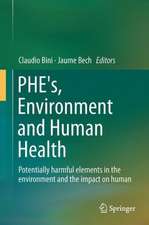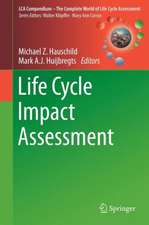ECOtoxicology: Ecological Dimensions: Ettore Majorana International Science Series
Editat de D.J. Baird, P.E. Douben, P. Greig-Smith, L. Maltbyen Limba Engleză Hardback – 30 sep 1996
| Toate formatele și edițiile | Preț | Express |
|---|---|---|
| Paperback (1) | 631.07 lei 6-8 săpt. | |
| SPRINGER NETHERLANDS – 30 sep 1996 | 631.07 lei 6-8 săpt. | |
| Hardback (1) | 636.94 lei 6-8 săpt. | |
| SPRINGER NETHERLANDS – 30 sep 1996 | 636.94 lei 6-8 săpt. |
Din seria Ettore Majorana International Science Series
-
 Preț: 396.02 lei
Preț: 396.02 lei - 18%
 Preț: 794.39 lei
Preț: 794.39 lei -
 Preț: 403.37 lei
Preț: 403.37 lei -
 Preț: 407.98 lei
Preț: 407.98 lei -
 Preț: 406.25 lei
Preț: 406.25 lei - 5%
 Preț: 370.74 lei
Preț: 370.74 lei - 5%
 Preț: 1098.99 lei
Preț: 1098.99 lei -
 Preț: 416.82 lei
Preț: 416.82 lei -
 Preț: 410.88 lei
Preț: 410.88 lei -
 Preț: 429.32 lei
Preț: 429.32 lei -
 Preț: 386.00 lei
Preț: 386.00 lei -
 Preț: 401.03 lei
Preț: 401.03 lei -
 Preț: 399.12 lei
Preț: 399.12 lei -
 Preț: 390.84 lei
Preț: 390.84 lei -
 Preț: 402.38 lei
Preț: 402.38 lei -
 Preț: 398.35 lei
Preț: 398.35 lei - 15%
 Preț: 655.78 lei
Preț: 655.78 lei - 18%
 Preț: 931.56 lei
Preț: 931.56 lei -
 Preț: 397.76 lei
Preț: 397.76 lei - 5%
 Preț: 386.66 lei
Preț: 386.66 lei -
 Preț: 375.62 lei
Preț: 375.62 lei -
 Preț: 381.21 lei
Preț: 381.21 lei -
 Preț: 382.36 lei
Preț: 382.36 lei -
 Preț: 394.12 lei
Preț: 394.12 lei - 15%
 Preț: 650.04 lei
Preț: 650.04 lei -
 Preț: 402.38 lei
Preț: 402.38 lei -
 Preț: 400.85 lei
Preț: 400.85 lei - 15%
 Preț: 656.43 lei
Preț: 656.43 lei - 18%
 Preț: 1219.94 lei
Preț: 1219.94 lei -
 Preț: 390.84 lei
Preț: 390.84 lei -
 Preț: 392.37 lei
Preț: 392.37 lei -
 Preț: 406.42 lei
Preț: 406.42 lei -
 Preț: 376.04 lei
Preț: 376.04 lei -
 Preț: 435.87 lei
Preț: 435.87 lei - 5%
 Preț: 388.84 lei
Preț: 388.84 lei - 18%
 Preț: 1226.24 lei
Preț: 1226.24 lei -
 Preț: 419.14 lei
Preț: 419.14 lei - 5%
 Preț: 1422.31 lei
Preț: 1422.31 lei -
 Preț: 410.88 lei
Preț: 410.88 lei -
 Preț: 392.37 lei
Preț: 392.37 lei - 5%
 Preț: 383.55 lei
Preț: 383.55 lei - 15%
 Preț: 660.68 lei
Preț: 660.68 lei -
 Preț: 397.97 lei
Preț: 397.97 lei -
 Preț: 407.78 lei
Preț: 407.78 lei -
 Preț: 401.42 lei
Preț: 401.42 lei
Preț: 636.94 lei
Preț vechi: 749.34 lei
-15% Nou
Puncte Express: 955
Preț estimativ în valută:
121.87€ • 127.93$ • 101.16£
121.87€ • 127.93$ • 101.16£
Carte tipărită la comandă
Livrare economică 10-24 aprilie
Preluare comenzi: 021 569.72.76
Specificații
ISBN-13: 9780412754708
ISBN-10: 0412754703
Pagini: 90
Ilustrații: XII, 90 p.
Dimensiuni: 210 x 297 x 8 mm
Greutate: 0.32 kg
Ediția:1996
Editura: SPRINGER NETHERLANDS
Colecția Springer
Seria Ettore Majorana International Science Series
Locul publicării:Dordrecht, Netherlands
ISBN-10: 0412754703
Pagini: 90
Ilustrații: XII, 90 p.
Dimensiuni: 210 x 297 x 8 mm
Greutate: 0.32 kg
Ediția:1996
Editura: SPRINGER NETHERLANDS
Colecția Springer
Seria Ettore Majorana International Science Series
Locul publicării:Dordrecht, Netherlands
Public țintă
ResearchCuprins
1 Putting the ‘ECO-’ into ECOtoxicology.- 2 Ecology in ecotoxicology: some possible ‘rules of thumb’.- 2.1 Introduction.- 2.2 Reliability.- 2.3 Relevance.- 2.4 ‘Rules of thumb’.- 2.5 Conclusions.- References.- 3 Using demographic theory, community ecology and spatial models to illuminate ecotoxicology.- 3.1 Introduction.- 3.2 Stage-structured demographic models as an improvement on simply counting dead animals.- 3.3 Adapting recent advances in community ecology for predicting beyond single-species reponses in ecotoxicology.- 3.4 Using spatially explicit models to suggest how the scale and spatial patterning of a chemical stress influences its impact.- 3.5 Can ecology better serve environmental toxicology?.- 3.6 Conclusion.- Acknowledgements.- References.- 4 Indirect effects: concepts and approaches from ecological theory.- 4.1 Introduction.- 4.2 Simple types of indirect effects.- 4.3 Empirical studies to determine indirect effects.- 4.4 Estimating magnitudes of direct and indirect effects.- 4.5 Factors affecting the propagation of indirect effects.- 4.6 Indeterminacy of ecological interactions.- 4.7 Conclusions.- References.- 5 The dimensions of space and time in the assessment of ecotoxicological risks.- 5.1 Introduction.- 5.2 Space and time in ecotoxicology: arguments from first principles.- 5.3 Effects of temporal and spatial factors on ecotoxicological processes.- 5.4 The next steps in ecotoxicology.- References.- 6 Coping with variability in environmental impact assessment.- 6.1 Introduction.- 6.2 The nature of environmental variation.- 6.3 Variation and impact assessment.- 6.4 Study designs and their assumptions.- 6.5 On natural variation, pseudoreplication, power and scale.- 6.6 Conclusions.- Acknowledgements.- References.- 7 Environmental stress andthe distribution of traits within populations.- 7.1 Are responses to environmental stress general?.- 7.2 Key definitions.- 7.3 Population tolerance distributions.- 7.4 Sensitivity in toxicology.- 7.5 Sensitivity in ecology.- 7.6 Variability in asexual versus sexual populations.- 7.7 Stress-caused changes in variability.- 7.8 Evidence for increased variability in response to stress?.- 7.9 Predicting variance changes in response to stress.- 7.10 Detecting effects of stress on variable systems.- 7.11 Promising directions for future inquiry.- 7.12 Concluding remarks.- Acknowledgements.- References.
Recenzii
...short, concisely written, ideas-driven reviews of dey issues making this a text suitable for both students and researchers - Ethology Ecology & Evolution
